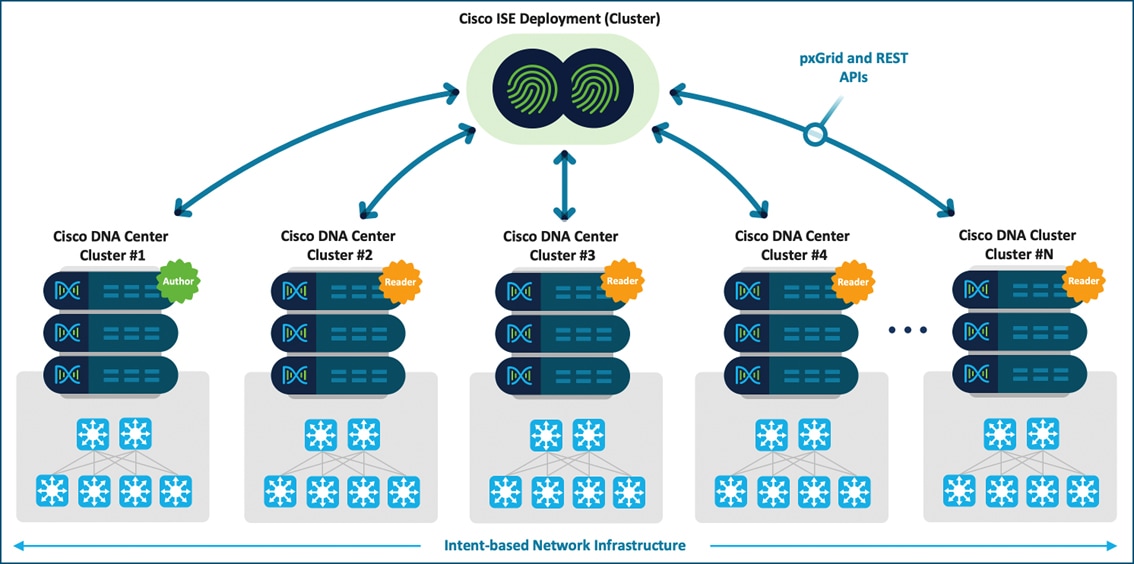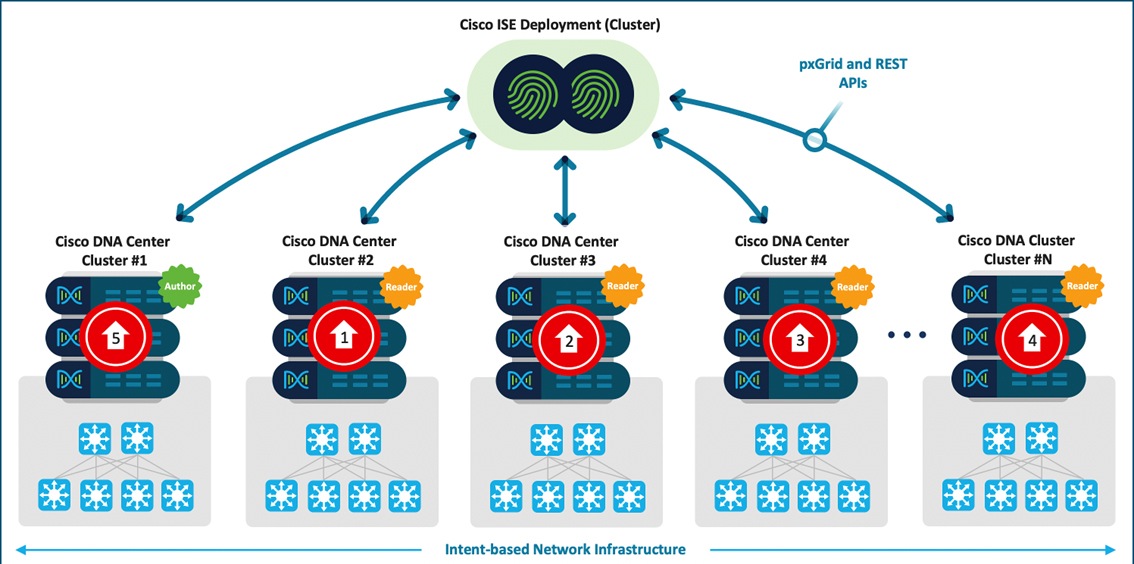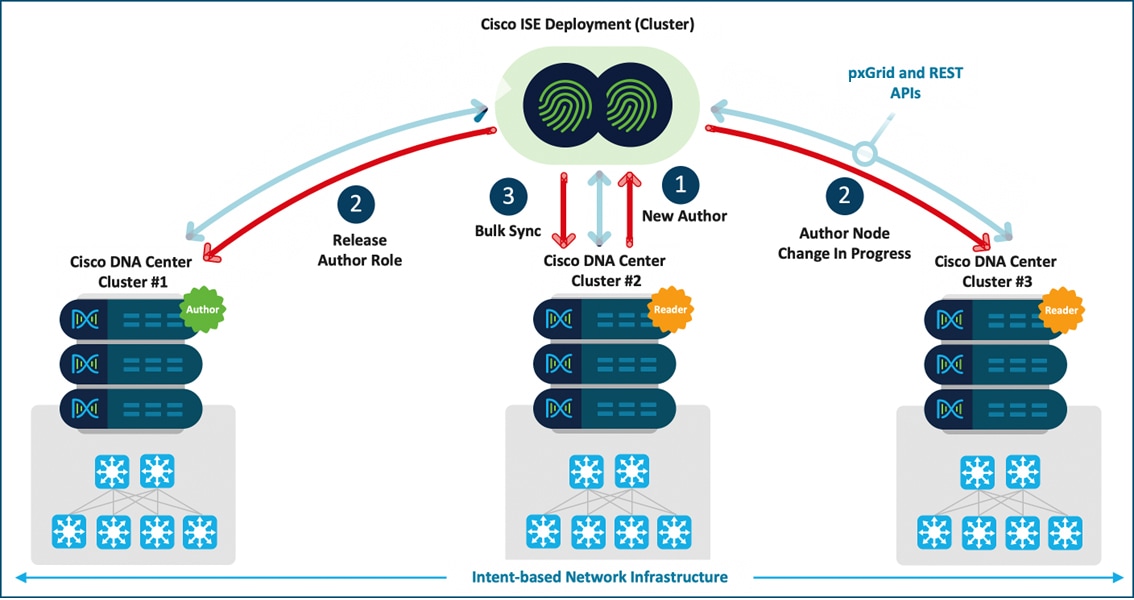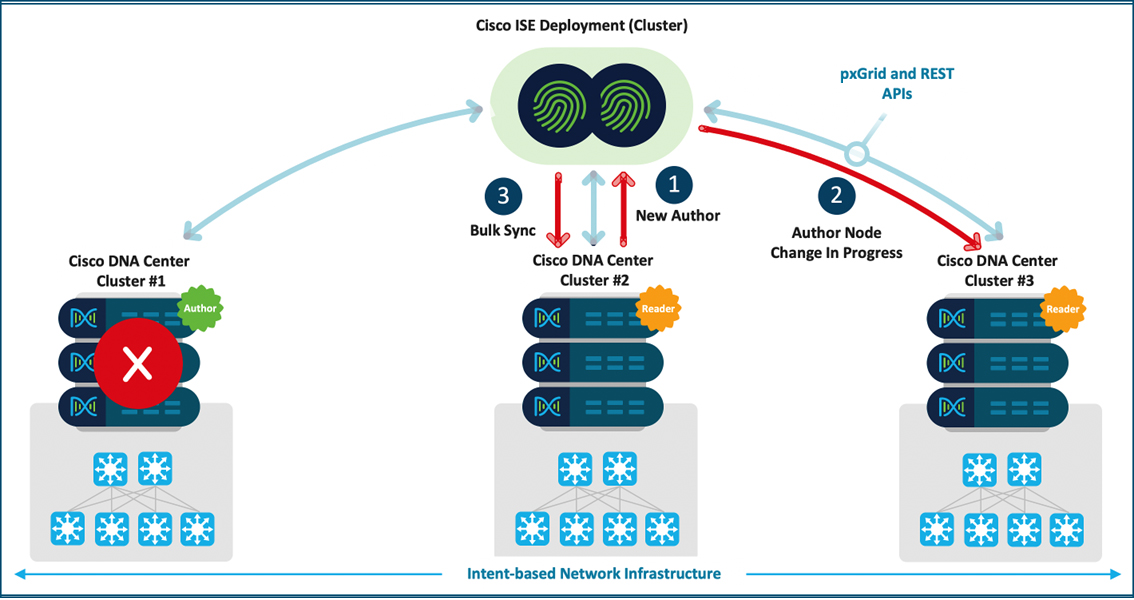Overview of a Multiple Catalyst Center deployment
When you integrate more than one Catalyst Center cluster with a single Cisco ISE system, each Catalyst Center cluster is independent. No information is shared among the clusters. In this scenario, when you deploy Cisco Software-Defined Access (SD-Access) on Catalyst Center, the set of virtual networks (VNs) and all other SD-Access is local to each cluster.
Catalyst Center provides a mechanism to coordinate SD-Access and Group-Based Policy (GBP) elements across multiple Catalyst Center clusters integrated with a single Cisco ISE system. To enable global administration of SD-Access across multiple Catalyst Center clusters with a consistent set of VNs, the Multiple Catalyst Center feature leverages the existing secure connection with Cisco ISE to propagate VNs, security group tags (SGTs), Access Contracts, and Group-Based Access Control (GBAC) Policy from one cluster to another cluster. Cisco ISE takes the information learned from one cluster (known as the Author Node) and propagates it to the other clusters (known as the Reader Nodes).
The Multiple Catalyst Center feature is available when you integrate it with Cisco ISE Release 3.2 or later.

 Note |
|
The Multiple Catalyst Center feature has specific role designations for the clusters:
-
Author Node cluster
-
Reader Node cluster



 Feedback
Feedback